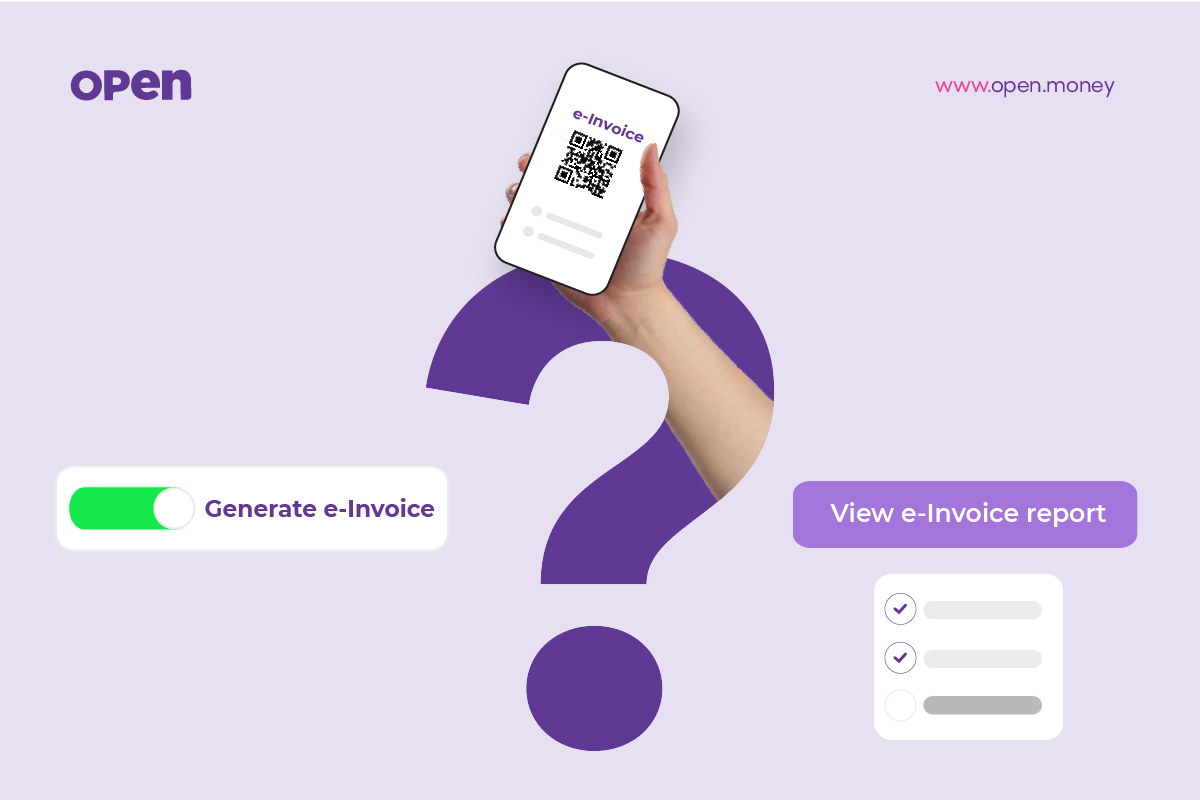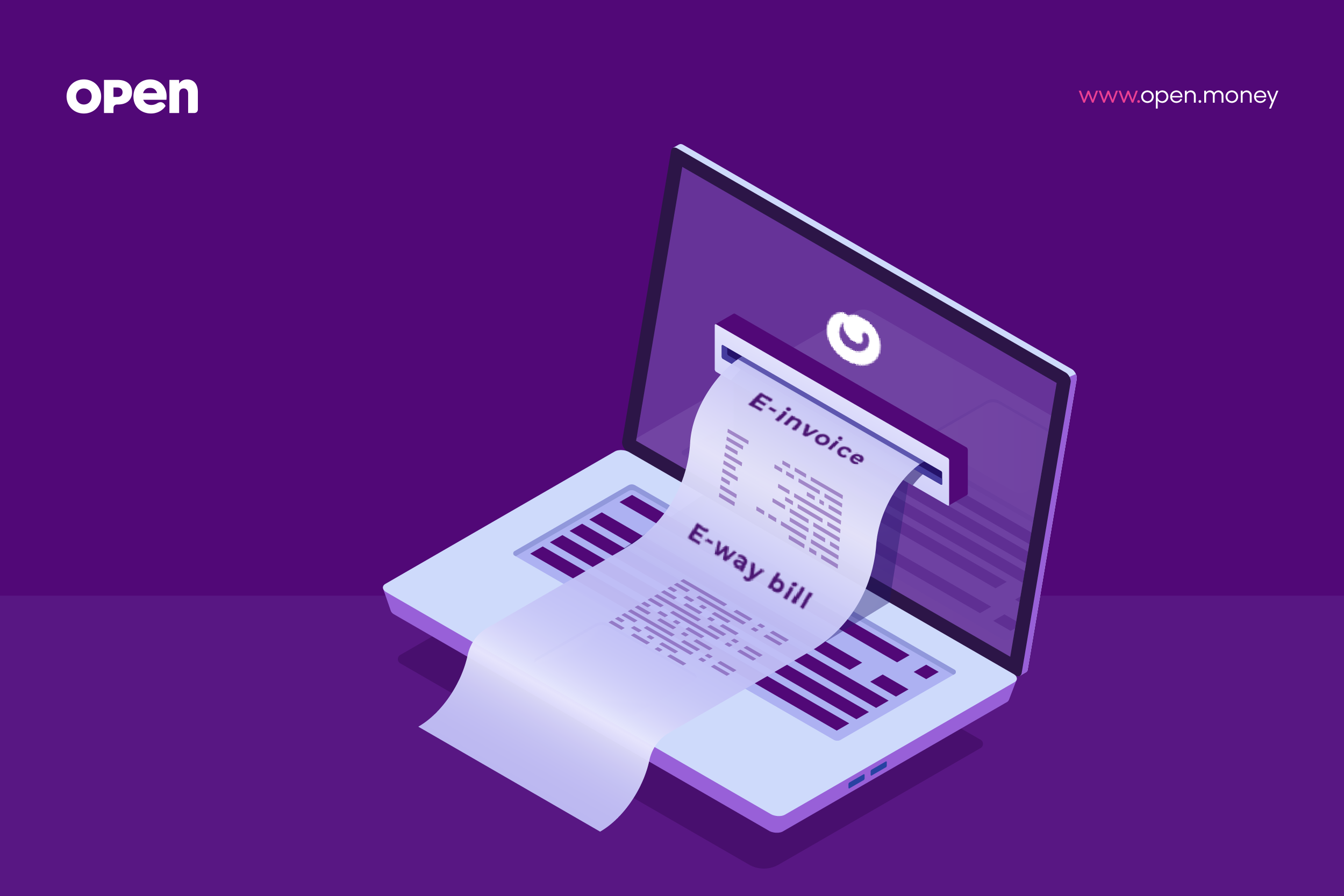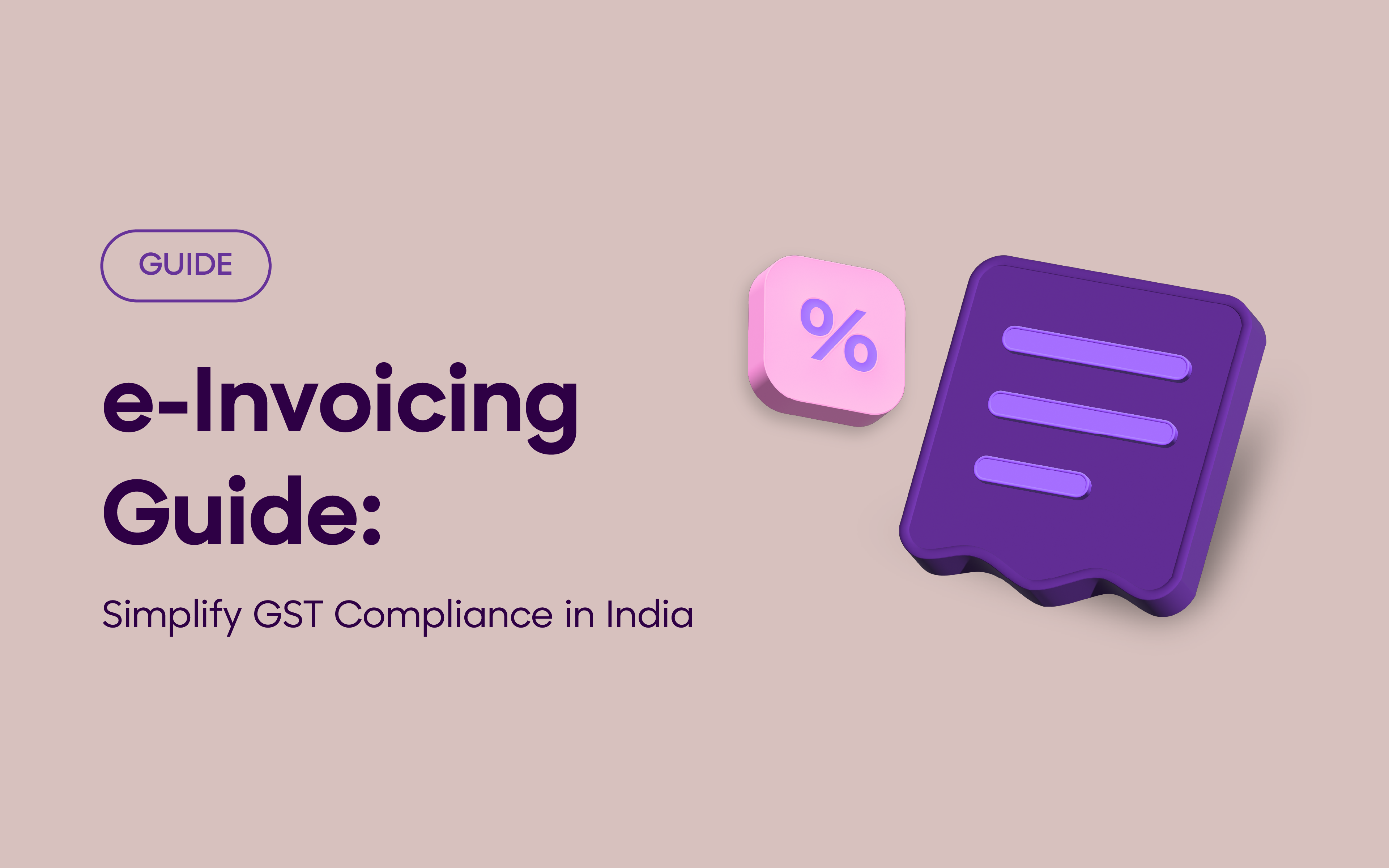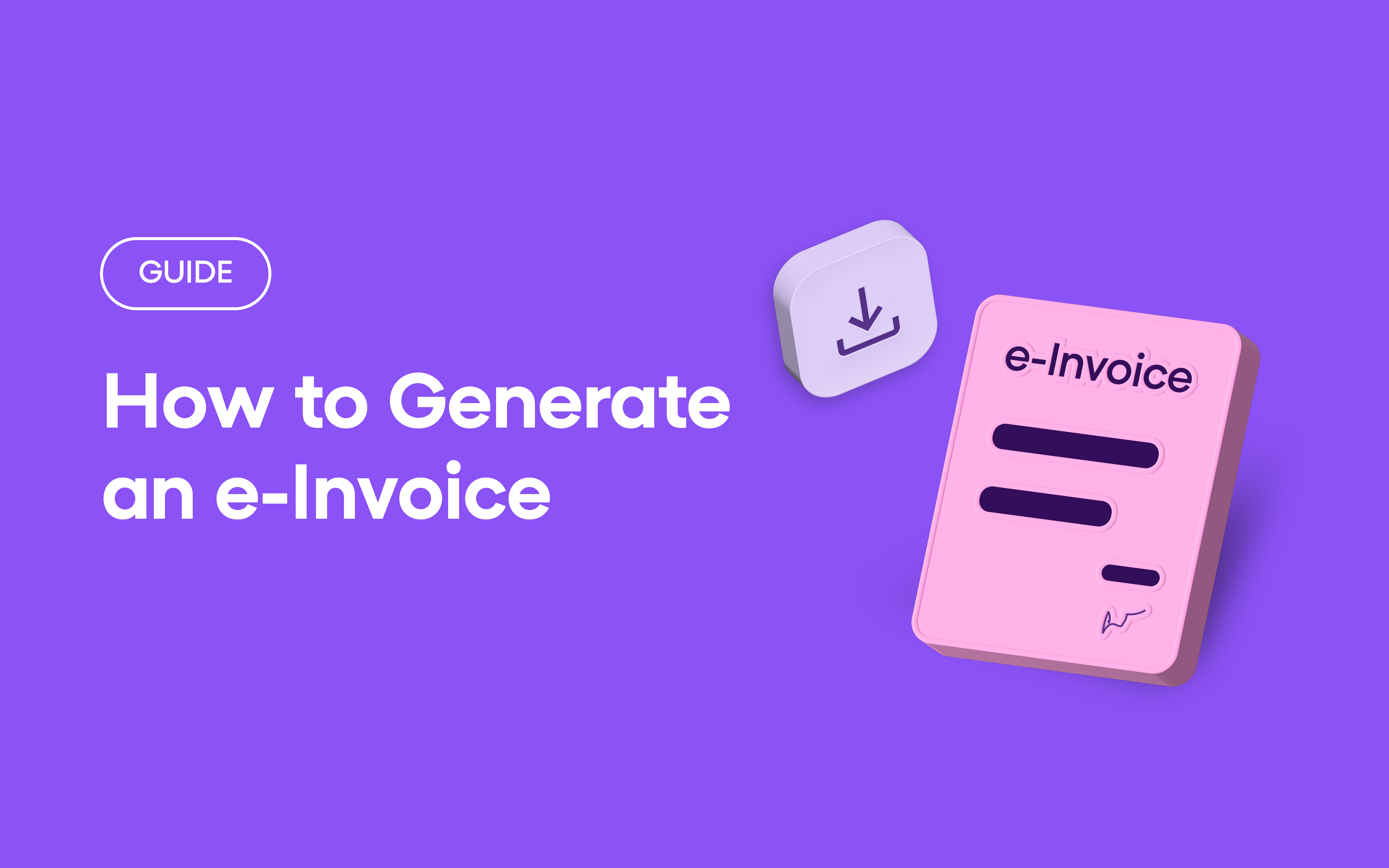Post GST adoption and acceptance, e-Invoicing under GST has now become an integral part of business operations for Indian taxpayers. e-Invoicing under GST system has already been implemented in India since October 01, 2020. A lot of businesses, however, find it confusing with its evolution. Keeping this in mind, we have tried answering some frequently asked questions related to e-Invoicing.
What is e-Invoicing under GST?
e-Invoicing, a.k.a Electronic Invoicing, is a process to make invoices more authentic and compliant for tax return filing purposes for B2B businesses. An e-Invoice consists of invoice data in a more structured visual presentation. With the adoption of e-Invoice systems, businesses can pre-populate the returns for filing purposes and get rid of reconciliation challenges. Businesses can share invoice data to the GST system by integration of IRP (Invoice Registration Portal) via GSP (GST Suvidha Provider) for validation.
What is an e-Invoicing solution?
An e-Invoicing solution is a platform that enables businesses to create invoicing documents and details based on the defined e-Invoicing format. Further, it allows the business to store this e-Invoice on cloud or be integrated into the buyer’s Accounts Payable system. With this, managing the productive workflow becomes easier for a business.
How to generate an e-Invoice under GST?
To generate an e-Invoice, the applicable taxpayer must start with creating API credentials on the e-Invoicing portal. Once this is done, they need to send the JSON file of their invoices to the IRP (Invoice registration portal) via an ERP or a GSP (GST Suvidha Provider). The IRP validates all the details and generates an IRN (Invoice Reference Number) and a QR code for that invoice. This invoice with the IRN and a QR code is an e-Invoice.
Next, this data gets transferred to the e-Way Bill system. There are two segments of the e-Way Bill system – Part A and Part B. When an e-Invoice is sent to the e-Way Bill system, Part A of the system gets generated and with the addition of the transporter’s details, it also generates Part B.
What is the process of generating an e-Invoice with Open?
To create an e-invoice with Open, you must create API credentials on the e-Invoice portal. Learn how to create API credentials by following these simple steps. Once you are ready with your API credentials, validate all your created/ imported invoices and get started with e-Invoicing with Open. If you enable the e-Invoice toggle while creating an invoice with Open, you can generate an e-Invoice for that invoice then and there. If not, you may find all your applicable invoices listed as ‘Not Generated’ in the e-Invoice report. Simply choose the invoices and convert them into e-Invoices in a click.
What is e-Invoicing applicability under GST?
e-Invoicing under GST applies to all the businesses that are registered under GST and issuing B2B invoices in a phased manner as discussed above. From 1st August 2023, every business crossing an aggregate turnover of over 5cr. from any preceding year after FY 2017-18 onwards is required to follow the current e-Invoicing guidelines. The aggregate turnover includes all GSTINs under a single PAN across India.
If the turnover in the last FY was below the threshold limit but it increased beyond the threshold limit in the current year, then e-Invoicing would apply from the beginning of the next financial year.
Is e-Invoicing mandatory?
e-Invoicing is mandatory for B2B businesses with an aggregate turnover of over ₹10 Cr. They must follow the e-Invoicing practices under the current guidelines to comply with the latest GST regulations.
Which businesses are not required to generate e-Invoices?
Irrespective of the turnover, e-Invoicing shall not apply to the following categories of registered businesses for now –
- An insurer or a banking company or a financial institution, including an NBFC
- A Goods Transport Agency (GTA)
- A registered person supplying passenger transportation services
- A person supplying services by way of admission to the exhibition of cinematographic films in multiplex services
- An SEZ (Special Economic Zone) unit
- A government department and local authority.
What are the benefits of e-Invoicing?
- All the invoices generated by suppliers can be tracked in real-time by enabling e-Invoice.
- Major gaps in data reconciliation are plugged, resulting in reduced errors and data mismatch instances.
- e-Invoices created on one software can be read by another, helping reduce fraudulence.
- Details of invoices get auto-populated for returns, making the filing process seamless.
- Information procurement at the transaction level minimizes the possibility of audits by tax authorities.
- The QR code on the e-Invoices provides access to the eligible GST invoices.
What kind of supplies are covered under e-Invoicing?
GST e-Invoicing currently applies to:
- Supplies to registered persons (i.e., B2B supplies),
- Supplies to SEZs (with/without payment of tax),
- Exports (with/without payment of tax), and
- Deemed exports
What kind of documents are to be reported into the Invoice Registration Portal?
The documents that will be covered under the e-Invoicing system are as follows-
- Invoices by the supplier
- Credit notes by the supplier
- Debit notes by the recipient
- Any other document as notified under GST law to be reported as an e-Invoice by the creator of the document
What are the mandatory fields in an e-Invoice?
An e-Invoice structure includes both mandatory and optional fields. Mandatory fields are those which are compulsory for an invoice under the e-Invoice standard. Optional areas are those which can be classified as per business requirements.
The maximum number of items in an e-Invoice is 1000. All mandatory fields have to be filled in for filing e-Invoices on IRP. A mandatory field without value can be reported as NIL.
Basic details required –
- Supplier’s information
- Recipient’s information
- Invoice item details
- GST details
Is e-Invoicing applicable to nil-rated or wholly-exempt supplies?
No, e-Invoice does not apply to nil-rated or wholly-exempt supplies as in these cases, only a bill of supply is issued and not a tax invoice.
How to validate the details of an e-Invoice?
Download the QR Code Verify app and verify the QR code printed on the e-Invoice.
Can an e-Invoice be cancelled partially/fully?
An e-Invoice can only be fully cancelled. It cannot be partially cancelled. Also, the e-Invoice must be cancelled within 24 hours of its generation, otherwise, it needs to be manually cancelled on the GST portal in the GSTR-1 return, before the same is filed. Moreover, once an IRN is cancelled, the same invoice number cannot be used again to generate another invoice. If used again, the IRP will reject the same.
How does Open’s e-Invoicing solution benefit businesses?
Open’s e-Invoicing solution helps businesses seamlessly connect with the IRP system and generate e-Invoices in a single click. Businesses can enable e-Invoicing to easily generate e-Invoices and also import the existing invoice details on Open fetch, generate, cancel, and print the e-Invoice details (QR code, IRN, Acknowledgement date and status). This helps them manage e-Invoice requirements without many changes to the business process.
Checkout our product walkthrough video & discover how OPEN works: https://register.open.money/product-demo/





